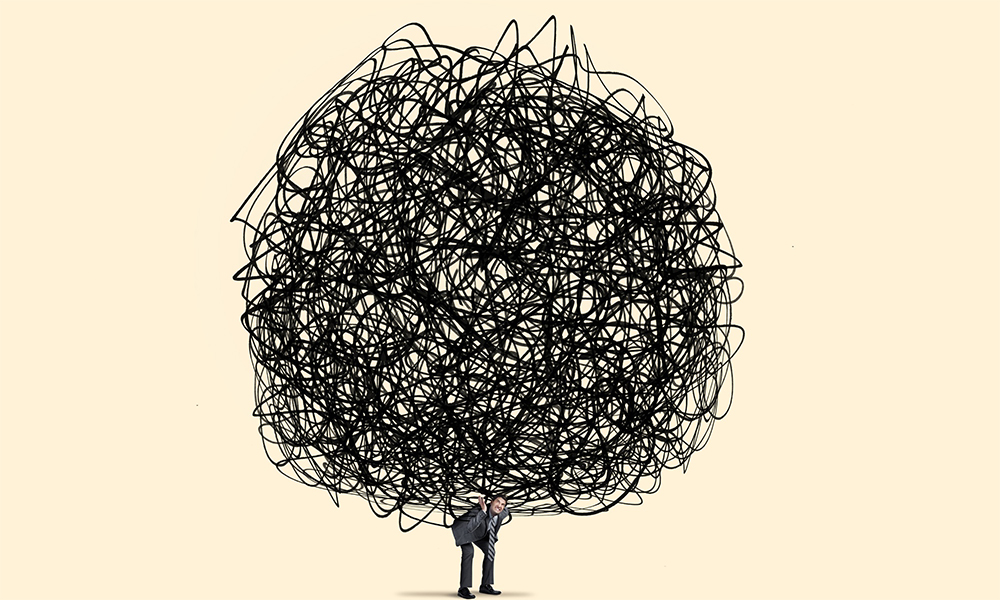A couple of months ago, at Sydney Law School, Dr Christopher Rudge, a legal academic, was going through a Deloitte report commissioned by the Australian government. On the surface, it looked like a premium consulting deliverable – polished language, clean structure, the familiar tone of authority.
Then one reference made him pause. It cited a book that didn’t exist. Curious, he checked another. Then another. A few sources couldn’t be traced at all. One footnote even pointed to a federal court judgment that had never been issued.
He raised the concern. The media picked it up. What followed was uncomfortable for a firm known for its high standards. The government quietly issued a revised version. Deloitte deleted more than a dozen references, acknowledged using generative AI during drafting, and returned part of the AUD 440,000 fee.
Since 2023, AI use at companies has doubled. And yet, according to MIT Media Lab, 95% of organisations haven’t seen any measurable benefits. Why? One big reason: ‘workslop’. Researchers from Stanford and BetterUp Labs coined this term in a paper published by the Harvard Business Review:
Employees are using AI tools to create low-effort, passable looking work that ends up creating more work for their coworkers… We define workslop as AI generated work content that masquerades as good work, but lacks the substance to meaningfully advance a given task.
I’m sure this rings a bell for many of you. You know that feeling of confusion you sometimes get while reading an email or a document? “Wait, what does this mean exactly? How is it relevant? This doesn’t make sense…”
That’s textbook workslop – ambiguous, incomplete or lacking crucial context. Receiving such content can be highly frustrating because it increases your own workload. Now you need to spend precious time decoding it, following up or maybe even redoing the whole thing!
This week, let’s explore how the growing menace of workslop undermines productivity and collaboration. How can leaders harness AI usage more effectively?
When we dig deeper into AI’s instant gifts – the sleek presentations, the neat reports, the professional emails – we often find a vacuum. Lots of polish, little value. This is content that looks and sounds great but doesn’t say anything meaningful.
Generative AI can be useful. It can tighten up a draft, help organize our thoughts or give us a head start on a complex problem. But it can’t think for us. Still, many employees are using it to churn out ‘good enough’ content – and hitting send. Which means their teammates are stuck cleaning it up, chasing clarity or worse, starting over.
With AI touted as the ‘new Internet’, many companies have embraced it wholeheartedly, especially in sectors like tech and professional services. Employees are being strongly encouraged, even mandated, to make the most of these new tools – without any clear guidance on how to use them. Which means we can expect the workslop problem to get worse before it gets better.
The costs are higher than you might think. On average, it takes about two hours to deal with every workslop incident. Now consider that 40% of employees report receiving workslop in the past month, estimating that 15% of all content received by them is AI-generated. That’s a lot of wasted hours!
Then there’s the mental burden of figuring out the best way to respond when you receive workslop – whether from a team member, manager or business partner. Keep in mind that workslop flows across the hierarchy: laterally between peers, as well as upstream and downstream. As researchers note in the HBR paper mentioned above:
A cascade of effortful and complex decision-making processes may follow, including rework and uncomfortable exchanges with colleagues.
When workslop rises, collaborative dynamics also suffer. Those who share AI-generated fluff are viewed as less dependable, capable and creative. Trust, too, is undermined: the Stanford-BetterUp study found that 34% of employees who receive workslop notify their managers or co-workers about these incidents. They are also less willing to work with the sender again.
Finally, there’s the mental atrophy that goes hand in hand with workslop. Those who offload critical thinking skills to AI – and by extension, to their co-workers – risk diminishing these abilities in the long term. Experts are already sounding the alarm. Offload too much mental effort to AI, and your own cognitive muscles start to weaken.
Cleaning up the workslop
Leaders can consider six ways to stop low-quality, AI-generated work from clogging up their organisation:
1. Say no to ‘AI, everywhere, all at once’.
In their enthusiasm, some businesses have pushed the use of AI across all tasks. But generative AI isn’t a silver bullet. It’s useful for specific tasks, not for everything. Most vitally, it needs smart direction and human feedback to deliver anything genuinely useful.
2. Develop real AI guidance.
Craft clear policies and norms around generative AI. Telling teams to “use AI” isn’t enough. Define the when, where and how. Share best practices. Call out common pitfalls. Make expectations explicit. These are essential steps for reaping returns on your AI investment.
3. Put collaboration at the centre.
Workslop arises when employees view AI as a shortcut to dodge work – rather than an opportunity to achieve shared goals. Reframe AI as a collaborative tool to support teamwork. Send a clear message: “If your ‘effortless output’ makes life harder for everyone else, you’re doing it wrong.”
4. Get back to basics.
Team members must review AI-drafted content before sending it on. Edit for clarity. Verify facts. Add context. These fundamental tasks need to become part and parcel of AI-embedded workflows. Remind the team that AI has limited capabilities – it brings finesse but lacks deep knowledge and judgment.
5. Build a smarter accounting system.
In his Medium piece, Carlos Perez observes that when we send genuine work to co-workers, it counts as a deposit. But if we send workslop, it counts as a debt – since they now have to expend time and energy fixing it. Perez suggests designing a work environment that transfers such debts back to the sender:
If my workslop costs you two hours, those two hours should show up on my timesheet, not yours. If three people have to meet to clarify my unclear AI-generated strategy document, I should be required to attend all three meetings. Once the true cost of fake work becomes visible to its creator, the behavior changes naturally.
6. Reward substance over shine.
Stop glorifying glossy decks with no depth. Look past the polish and dig deeper into the thinking. Praise imperfectly presented ideas that lead somewhere. Normalise sharing early drafts. Rediscover brainstorms. Think out loud. The goal isn’t aesthetic perfection – it’s real value.
Generative AI can make a great assistant. It can tweak, sharpen and amplify. It can augment our human capabilities. But it can’t do our jobs for us. The moment we check out and let it run the show, we don’t just get less done – we start eroding the very fabric of how we work together.
The smart move? Treat AI as an ally, not an escape hatch. And remind your teams that real collaboration – the kind that builds trust, momentum and progress – still takes thoughtful human effort.








Comments